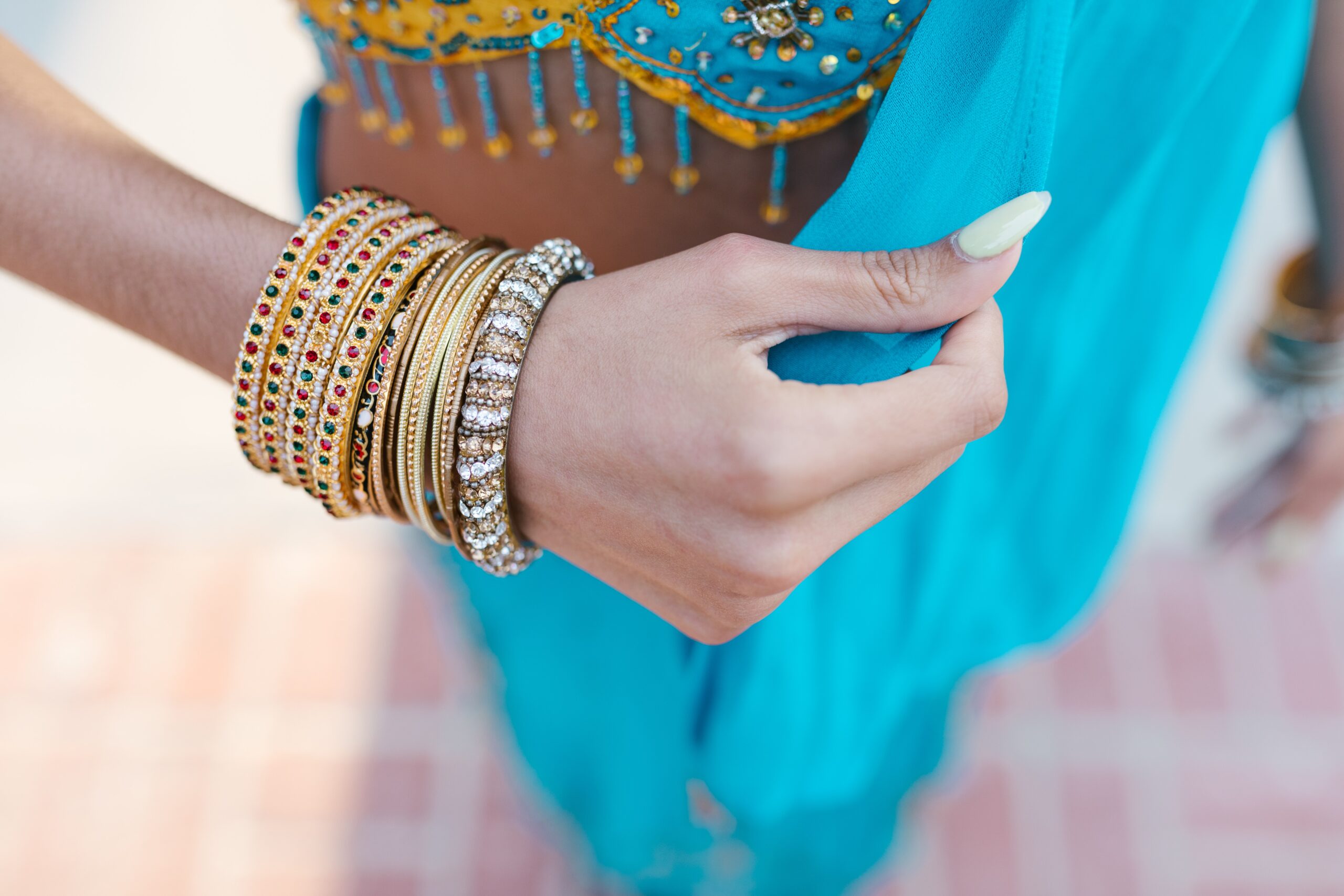What is costume jewelry?
Costume jewelry, also known as fashion jewelry, refers to a variety of decorative items worn for personal adornment that are produced as less expensive ornamentation or garment. This is in contrast to “real” jewelry which is more expensive and may be primarily viewed as collectibles, keepsakes, or investments. Ever since, costume jewelry matched the designs of its more expensive fine counterparts.
Early Costume Jewelry Designers
Among the first well-known couturiers to produce costume jewelry alongside garments were Coco Chanel, Jean Patou, Drécoll, and Premet, which accelerated its appeal. By 1925, costume jewelry was praised in the Marshall Field’s department store catalog, which stated, “The imitation is no longer a disgrace”.
Components
Costume or fashion jewelry was first created by setting cheap imitation gemstones like rhinestones or lucite in pewter, silver, nickel, or brass. Rhinestones were even downgraded by some producers during the Depression to lower production costs.
Sterling silver was frequently used in costume jewelry creations during World War II for the following reasons:
1. Base metal components were prohibited from commercial use because they were required for military manufacture during the war.
2. Because base metal could resemble platinum’s color, it was initially popular; sterling silver served the same purpose.
Because of this, sterling silver costume jewelry was produced for a while; some of it is still accessible on the vintage jewelry market today.
Numerous materials are used in modern costume jewelry. Instead of valuable stones, premium crystals, cubic zirconia imitation diamonds, and some semi-precious stones are utilized. Brass can be gold- or silver-plated, and vermeil or sterling silver can also be used as metals. Cheaper jewelry may still include gold plating over nickel, pewter, or other metals, and lead may be present in products produced abroad. Some pieces feature materials like wood, leather, acrylic, or plastic.
Historical expression
Art Deco period (1920-1930s)
The harshness of mass manufacturing and the sensitivity of art and design was attempted to be combined in the Art Deco movement. During this period, Coco Chanel introduced costume jewelry to complete the costume. With the start of the Great Depression and the start of World War II, the Art Deco movement came to an end.
Some of the traits of costume jewelry throughout the Art Deco era were:
- Free-flowing curves were abandoned in favor of a starkly symmetrical and geometric motif
- Cocktail rings, bangle bracelets, long pendants, elaborate accessory pieces like cigarette cases and holders, and bracelets with many bangles
Retro period (1935 to 1950)
Designers faced the art vs mass manufacturing conundrum throughout the Retro era. Plastics were combined with natural resources. American-made jewelry with a uniquely American aesthetic was a major component of the retro era. Numerous European jewelry businesses were forced to close due to the war in Europe. Since the economy was beginning to improve, many European designers moved to the United States.
Some of the traits of costume jewelry throughout the Retro era were:
- Glitz, refinement, and sophistication
- Hollywood-styled floral, bow, and sunburst designs
- Ballerinas, military themes, horses, moonstones, and horse motifs
- Jewelry made of plastic and Bakelite
Art Modern period (1945 to 1960)
Following World War II, jewelry designs evolved into the more conventional and subtle Art Modern style. The more fitted fashions of the 1950s and 1960s took the place of the huge, bold styles of the Retro era in fashion.
In the Art Modern era, costume jewelry had some of the following characteristics:
- Edgy, expensive jewelry
- Charm bracelets, big, chunky bracelets, Jade/opal, citrine, and topaz bracelets
- Christmas jewelry with poodle pins, Christmas tree pins, and more
- Rhinestones
As the Modern era began, “Body Jewelry” appeared. Kim Craftsmen Jewelry’s Carl Schimel was a pioneer of this look. Despite Kim Craftsmen’s closure in the early 1990s, many collectors continue to scour flea markets and vintage exhibitions for their desired artifacts.
Costume jewelry is glamorous
Costume jewelry has the potential to be elegant. To create a statement, several high-end fashion designers have included costume jewelry in their catwalk displays and red-carpet outfits. In addition, certain mid-20th-century vintage costume jewelry is very collectible and sought after for its glitz and distinctive designs.
For instance, Coco Chanel was renowned for using costume jewelry in her fashion creations, combining false pearls and other inexpensive materials with premium fabrics to get an opulent impression. Famous Hollywood figures like Audrey Hepburn and Elizabeth Taylor were notorious for accessorizing their attire with costume jewelry to add glitz.
Overall, costume jewelry may be glamorous and eye-catching even though it may not be as valuable as exquisite jewelry from precious metals and diamonds. It enables people to exhibit their unique fashion sense and create a statement without going over budget.

